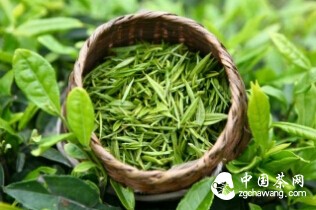Tea comes in many varieties, each with unique benefits. But how can you brew it without damaging its structure and maximize its effects? Brewing a good cup of tea requires careful consideration of water, utensils, and the type of tea. Let’s explore the methods of brewing tea.

Green tea brewing
Green tea emphasizes bright color, fresh aroma, and a mellow taste. Among the six major tea types, brewing green tea may seem simple but is actually quite challenging. Since green tea is unfermented, preserving its freshness is key. Slight deviations in brewing can make the tea stale, resulting in a dull color and muddled aroma. Additionally, the variety of green teas means each type requires specific water temperatures, steeping times, and methods based on leaf shape, tightness, and tenderness. Without practice, brewing a perfect cup of green tea is difficult.
(1) Water
Water quality directly affects the tea’s taste. As the ancients said, "Tea’s essence comes from water. Eight parts tea with ten parts water yields ten parts tea; eight parts water with ten parts tea yields only eight." Personally, water quality matters most for flavor, with color and aroma secondary. Poor-quality water can ruin even oolong tea.
Ancient tea texts often discuss water. "Mountain water is best, river water is middling, well water is inferior" reflects the preference for clean, fresh, and sweet water. Scientifically, water hardness affects tea color and solubility. Hard water yields a yellowish-brown brew with a bland or even bitter taste. Poor water not only ruins tea but also damages teaware with scale buildup. Soft or temporarily hard water is ideal.
Spring water is best, followed by clean river or stream water. Well water depends on the source. Rain and snow water are unsafe due to pollution. I use mineral water, like Nongfu Spring, for its slight sweetness. Tea houses often use mineral or distilled water. Those near mountains may use local springs, like Hangzhou’s Hupao Spring or Guangzhou’s Baiyun Mountain spring. Filtered tap water is also acceptable.
(2) Water temperature
Ancient tea masters paid great attention to water temperature, especially for compressed tea. Boiling water should be rapid, stopping at the first bubbles. Over- or under-boiling harms the tea. Temperature affects the dissolution of tea compounds, influencing flavor and aroma.
For green tea, temperature depends on quality. Delicate, high-grade green teas like tender buds require around 80°C. The more delicate the leaves, the lower the temperature. Too hot, and the tea turns bitter with a yellow hue; too cold, and the aroma fades. Lower-grade green teas need near-boiling water (100°C) for full flavor.
Note: 80°C for high-grade green tea usually means boiling then cooling. Sterilized water can be heated directly to the desired temperature.
(3) Tea quantity
There’s no fixed rule for tea quantity—it depends on teaware size, tea type, and personal preference. Generally, green tea uses a 1:50–60 tea-to-water ratio. For formal tea evaluation, 3g of tea is brewed in 150ml water.
Quantity mainly affects strength. Beginners should experiment to find their preferred taste.
(4) Teaware
For green tea, glass cups or white porcelain lidded bowls are ideal. Large mugs or teapots suit lower-grade green tea.
Glass cups are perfect for famous teas like West Lake Longjing, Biluochun, or Junshan Yinzhen, allowing observation of leaves unfurling. Some teas, like silver needles, stand upright before sinking, creating a visual spectacle. High-quality Junshan Yinzhen may rise and fall three times. Tea houses often use glass cups for green tea.
Ancient tea drinkers used lidded bowls, which retain heat better than glass. For tightly rolled green teas like pearl or eyebrow tea, I prefer lidded bowls. Good porcelain highlights the tea’s bright color and offers a refined tactile experience. Since green tea floats, a lid helps push leaves aside while drinking.
In short, teaware should be small—large vessels dilute the tea.